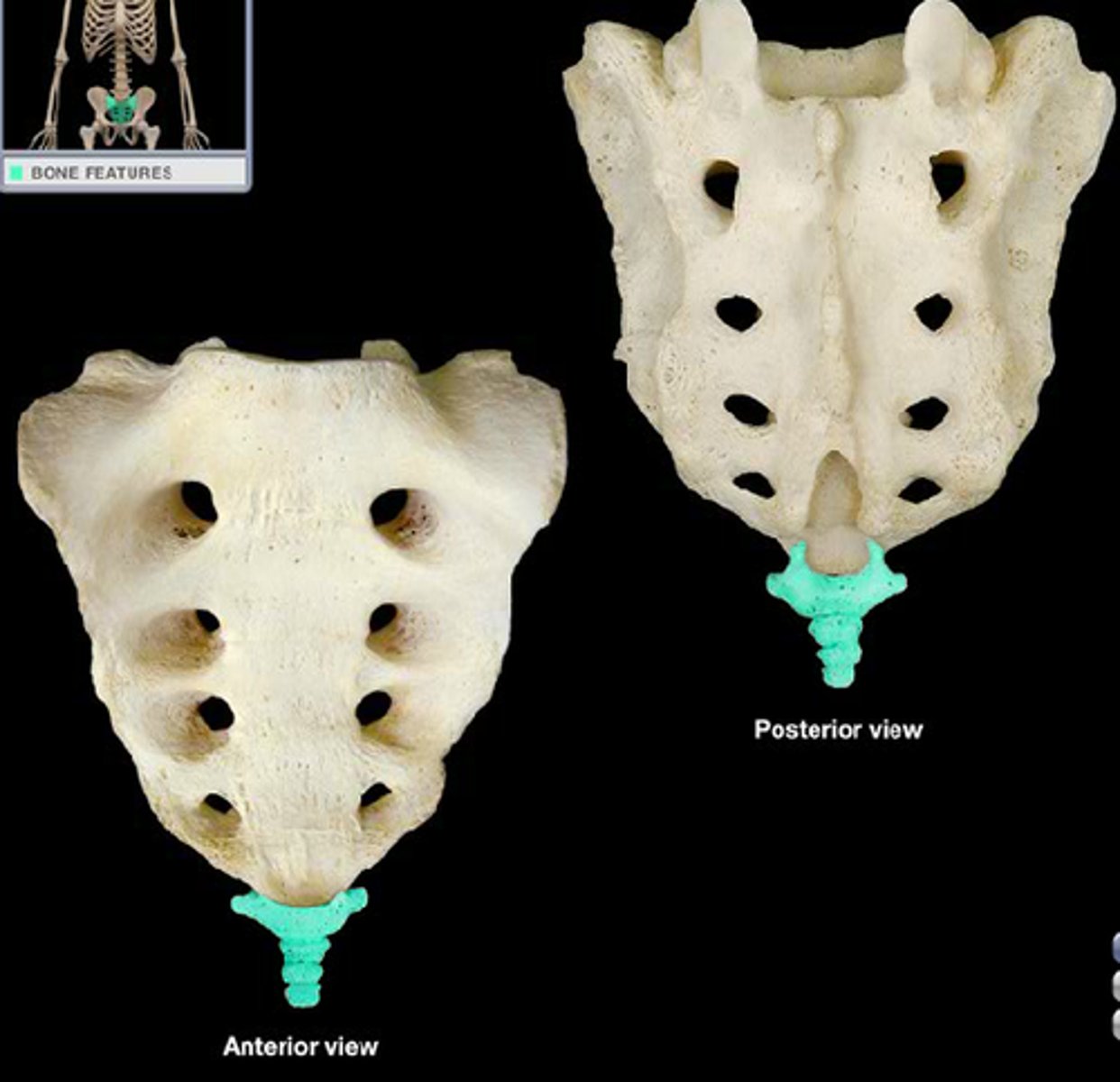Osteologic features of the vertebral column
1/8
There's no tags or description
Looks like no tags are added yet.
Name | Mastery | Learn | Test | Matching | Spaced |
|---|
No study sessions yet.
9 Terms
C1-atlas (atypical)
-body: none
-superior articular facets: concave, face superior
-inferior articular facets: flat to slightly concave, face inferior
-spinous processes: none, but has small posterior tubercle
-vertebral canal: triangular, largest of cervical region
-transverse processes: largest of cervical region
-comments: 2 large lateral masses, joined by ant. and post. arches
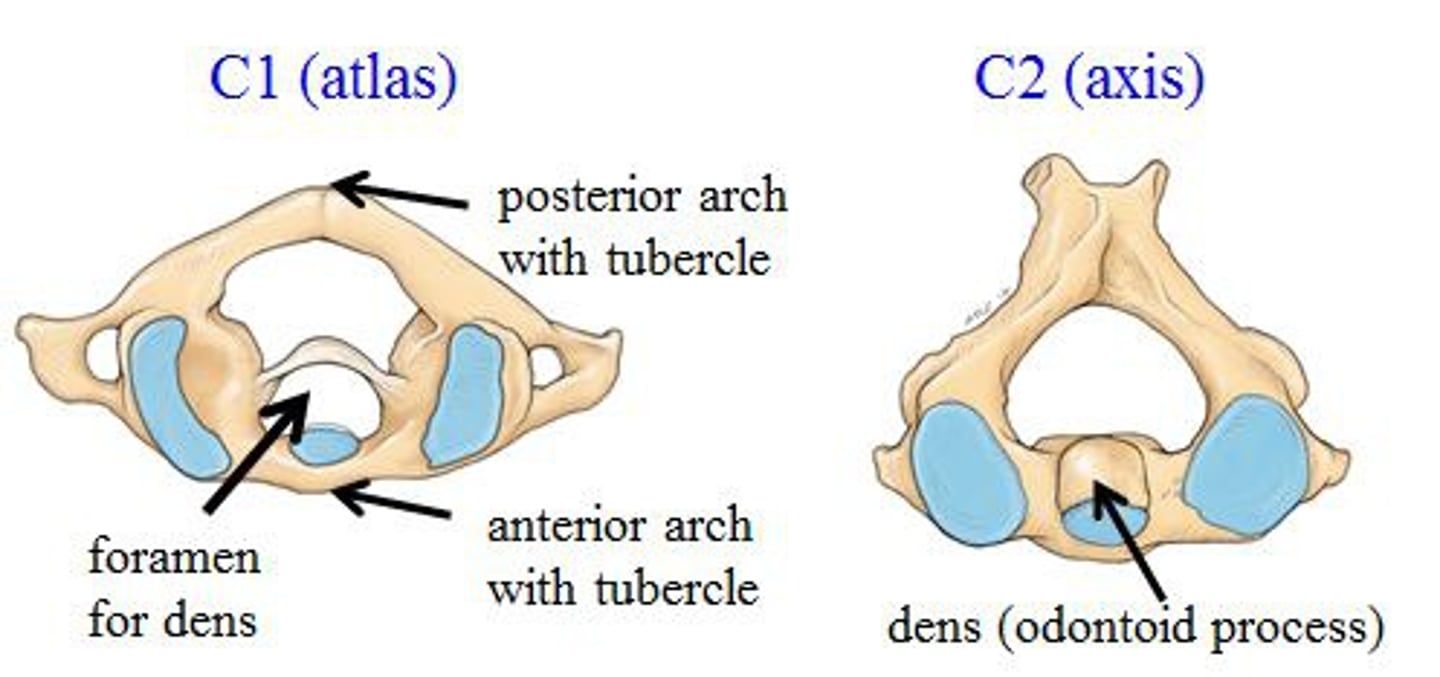
C2-axis (atypical)
-body: tall, with vertical projecting dens
-superior articular facets: flat to slightly convex, faces superior
-inferior articular facets: flat, face anterior and inferior
-spinous processes: largest of cervical region, bifid
-vertebral canal: large and triangular
-transverse processes: form ant. and post. tubercles
-comments: large sup. articular processes that support atlas and cranium
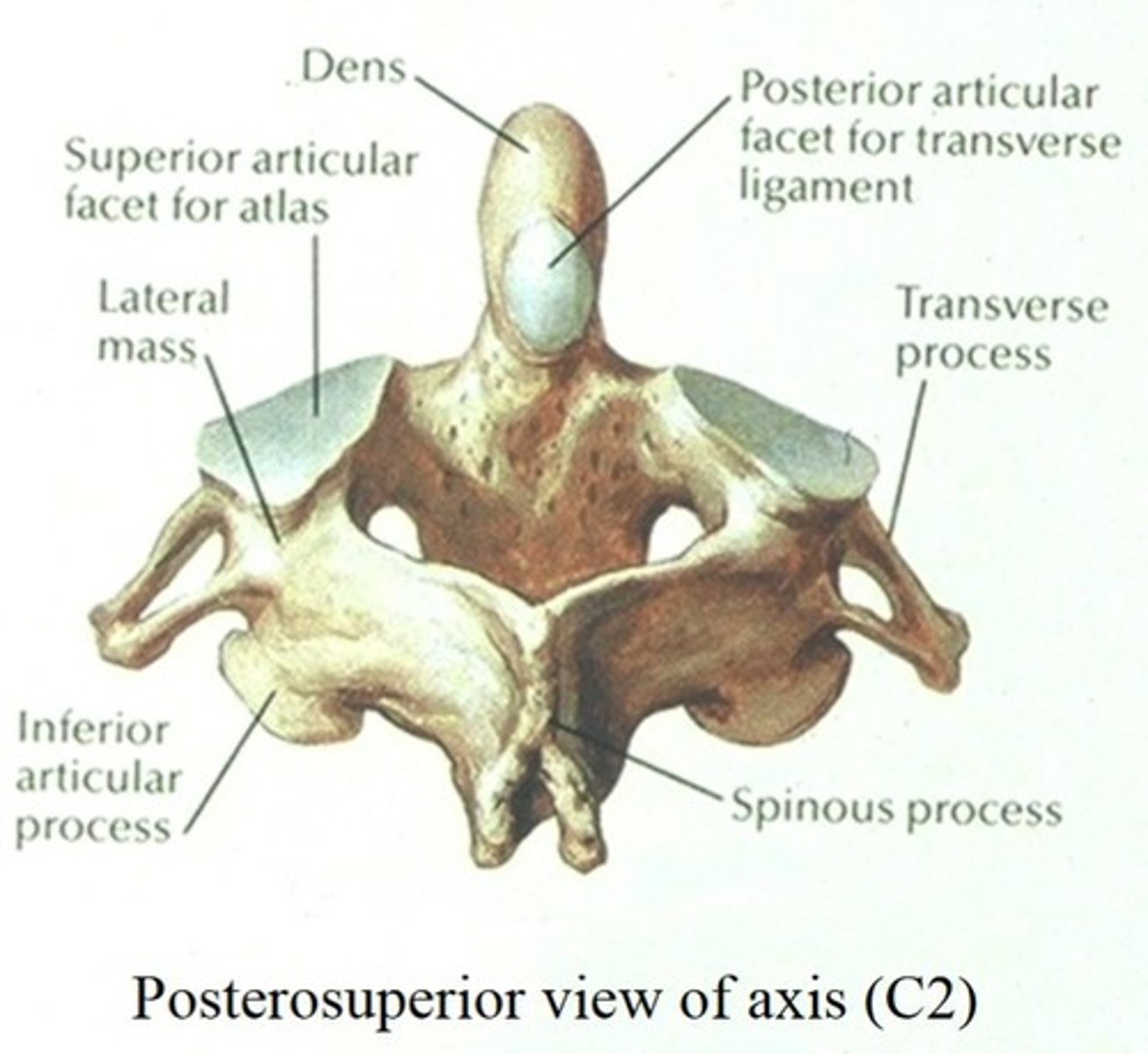
C3-6 (typical vertebrae)
-body: wider than deep, have uncinate processes
-superior articular facets: flat, face posterior and superior
-inferior articular facets: flat, face anterior and inferior
-spinous processes: bifid
-vertebral canal: large and triangular
-transverse processes: end as ant. and post. tubercles
-comments: considered typical cervical vertebrae
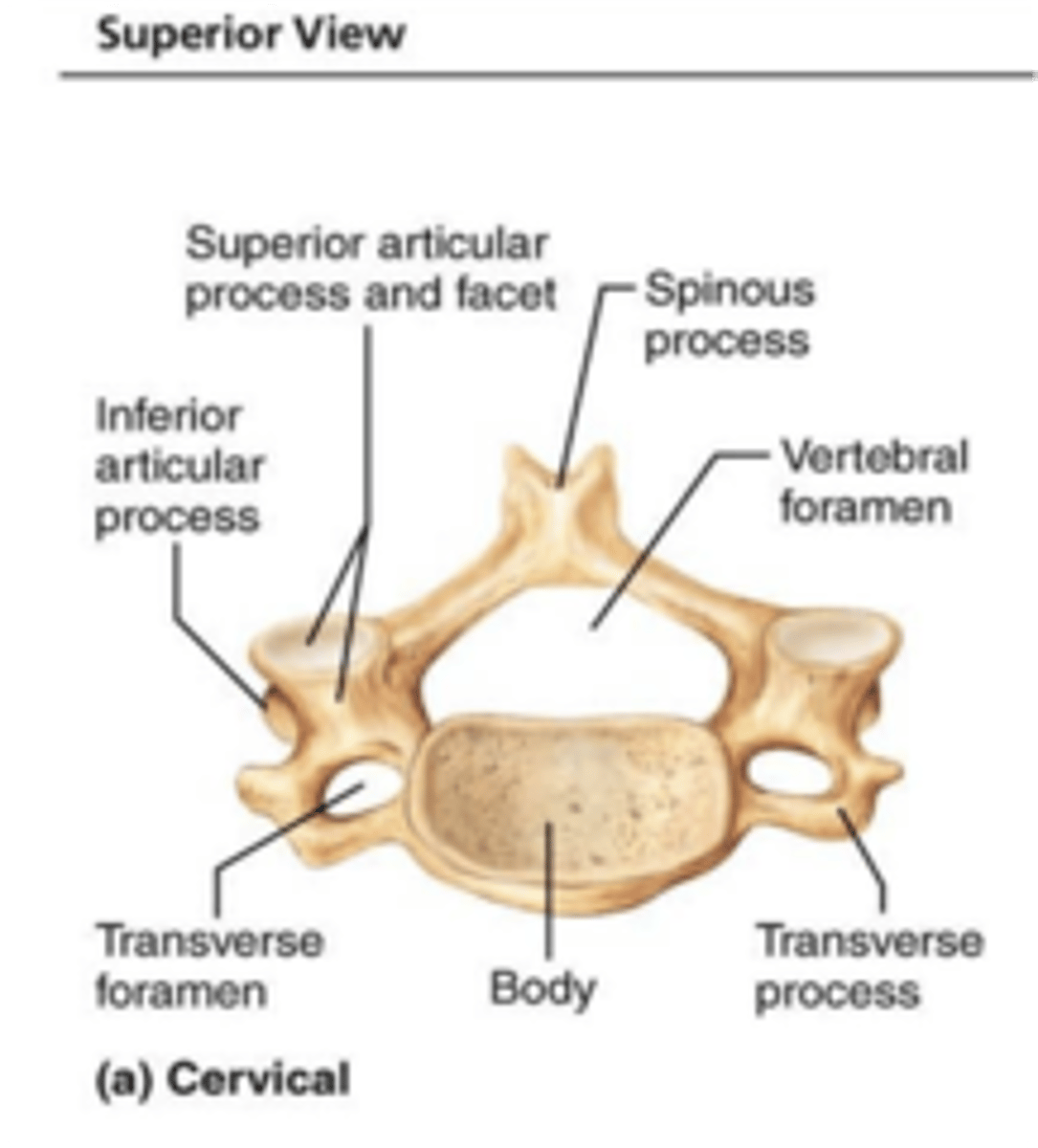
C7 (atypical)
-body: wider than deep
-superior articular facets: flat, face posterior and superior
-inferior articular facets: transition to typical thoracic vertebrae
-spinous processes: large, prominent, easily palpable
-vertebral canal: triangular
-transverse processes: thick, prominent, may have lrg ant. tubercle forming an extra rib
-comments: often called vertebral prominens because of lrg spinous process
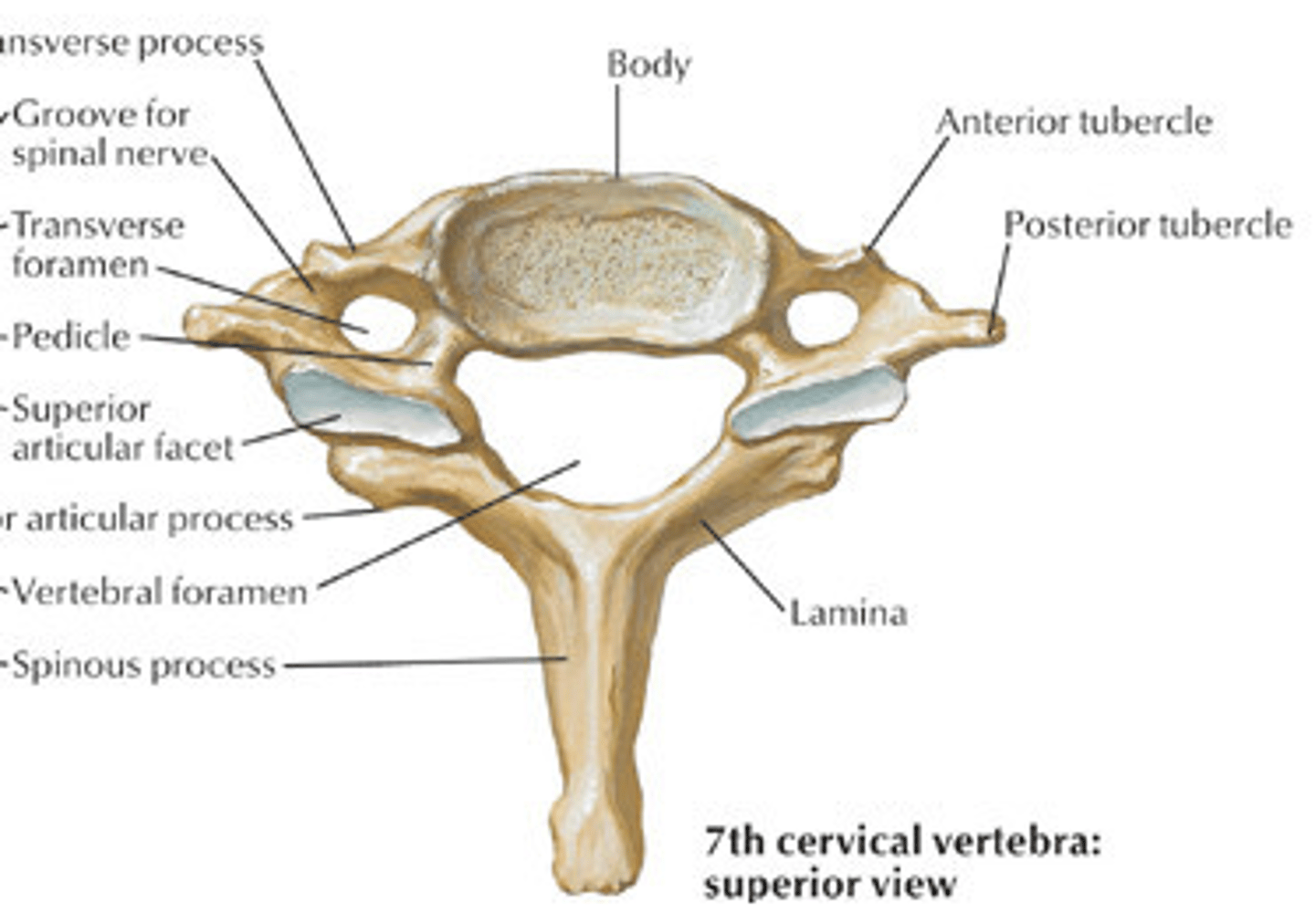
T2-T9 (typical vertebrae)
-body: equal width and depth, has costal demifacets for attachment of head of ribs 2-9
-superior articular facets: flat, face posterior
-inferior articular facets: flat, face anterior
-spinous processes: long and pointed, slant inferiorly
-vertebral canal: round, smaller than cervical
-transverse processes: project horizontally and slightly posterior, have costal facets for tubercles of ribs
-comments: considered typical thoracic vertebrae

T1 and T10-T12 (atypical vertebrae)
-body: T1 has full costal facet for rib 1 and a partial demifacet for rib 2. T10-12 each have full costal facet
-superior articular facets: flat, face mostly posterior
-inferior articular facets: flat, face mostly anterior
-spinous processes: long and pointed, slant inferiorly
-vertebral canal: round, smaller than cervical
-transverse processes: T10-T12 may lack costal facets
-comments: considered atypical thoracic vertebrae primarily because of manner of rib attachment
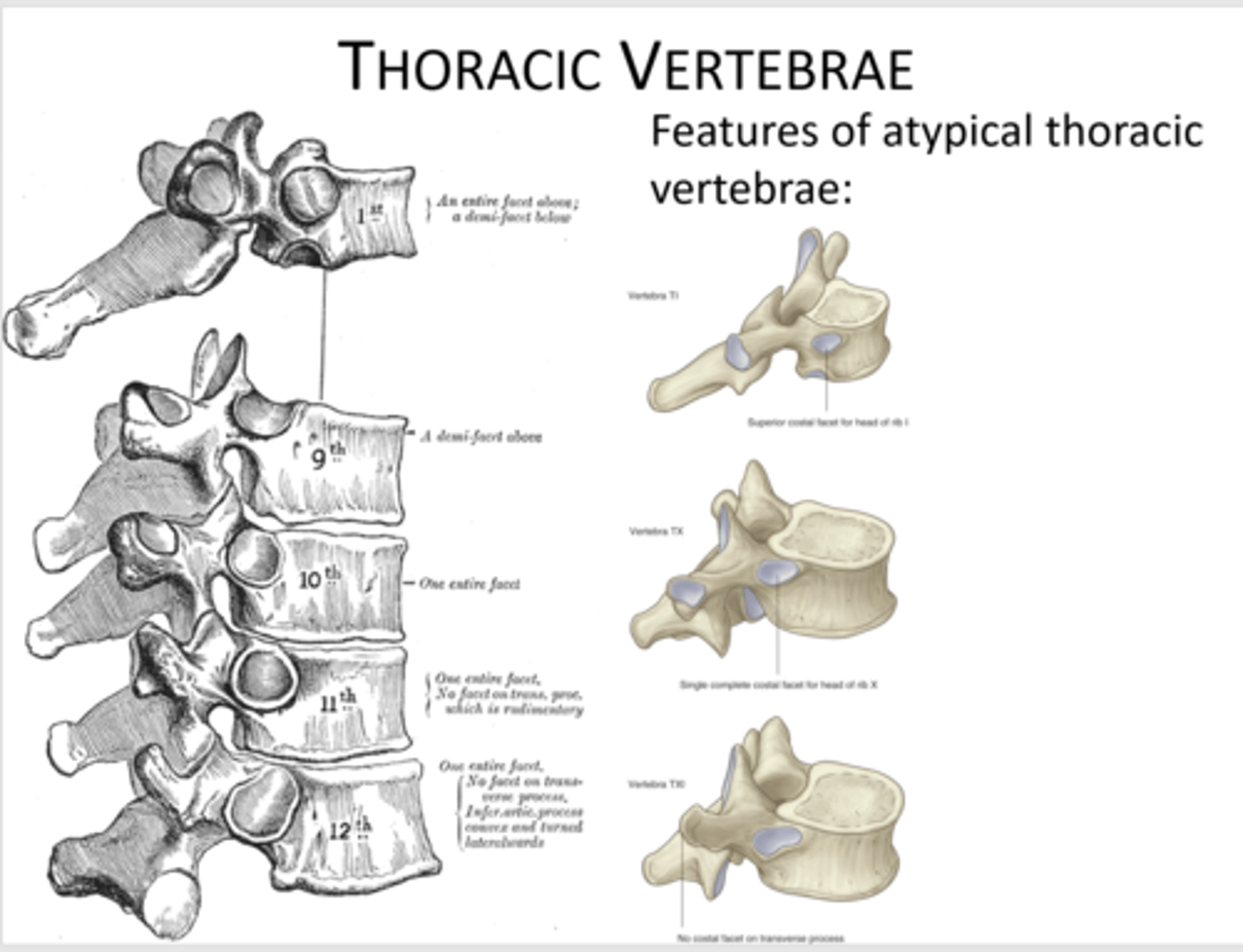
L1-L5
-body: wider than deep, L5 is slightly wedged (higher height ant. than post.)
-superior articular facets: slightly concave, face medial to posterior-medial
-inferior articular facets: L1-L4: slightly convex, face lateral to anterior-lateral. L5: flat, faces ant. and slightly lateral
-spinous processes: stout and rectangular
-vertebral canal: triangular, contains cauda equina
-transverse processes: slender, project laterally
-comments: superior articular processes have mammillary bodies
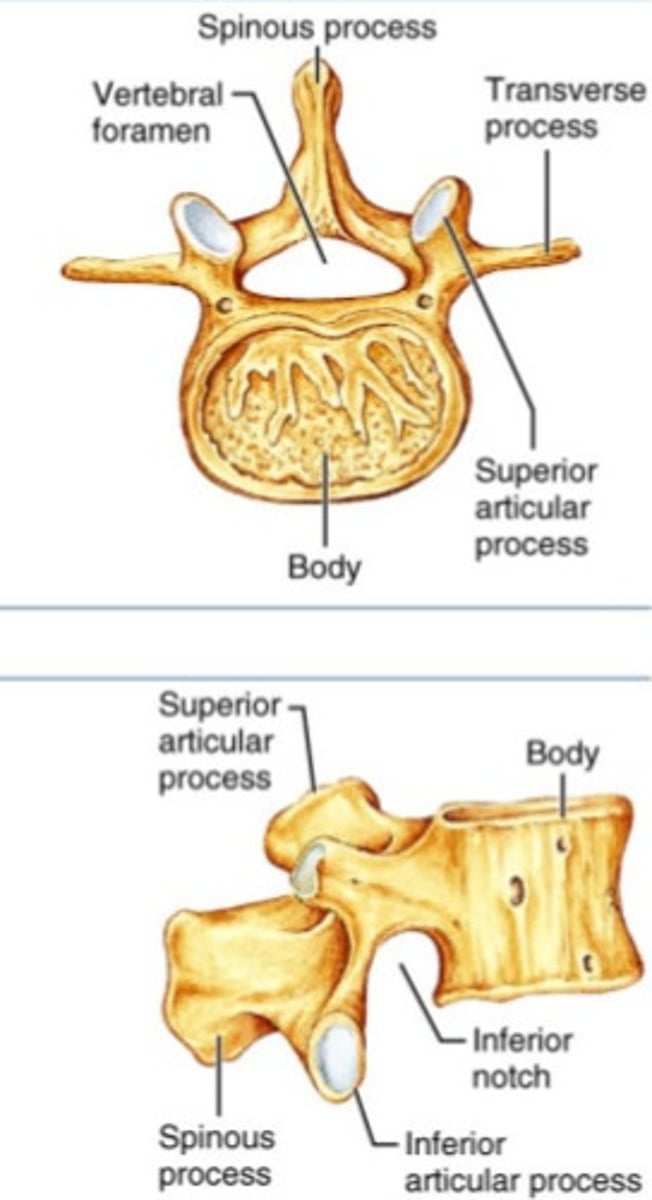
Sacrum
-body: fused. Body of first sacral vertebra most evident
-superior articular facets: flat, face posterior and slightly medial
-inferior articular facets: None
-spinous processes: None, replaced by multiple spinous tubercles
-vertebral canal: triangular, contains cauda equina
-transverse processes: none, replaced by multiple transverse tubercles
-comments: N/A

Coccyx
-body: fusion of 4 rudimentary vertebrae
-superior articular facets: rudimentary
-inferior articular facets: rudimentary
-spinous processes: rudimentary
-vertebral canal: ends at first coccyx
-transverse processes: rudimentary
-comments: N/A
